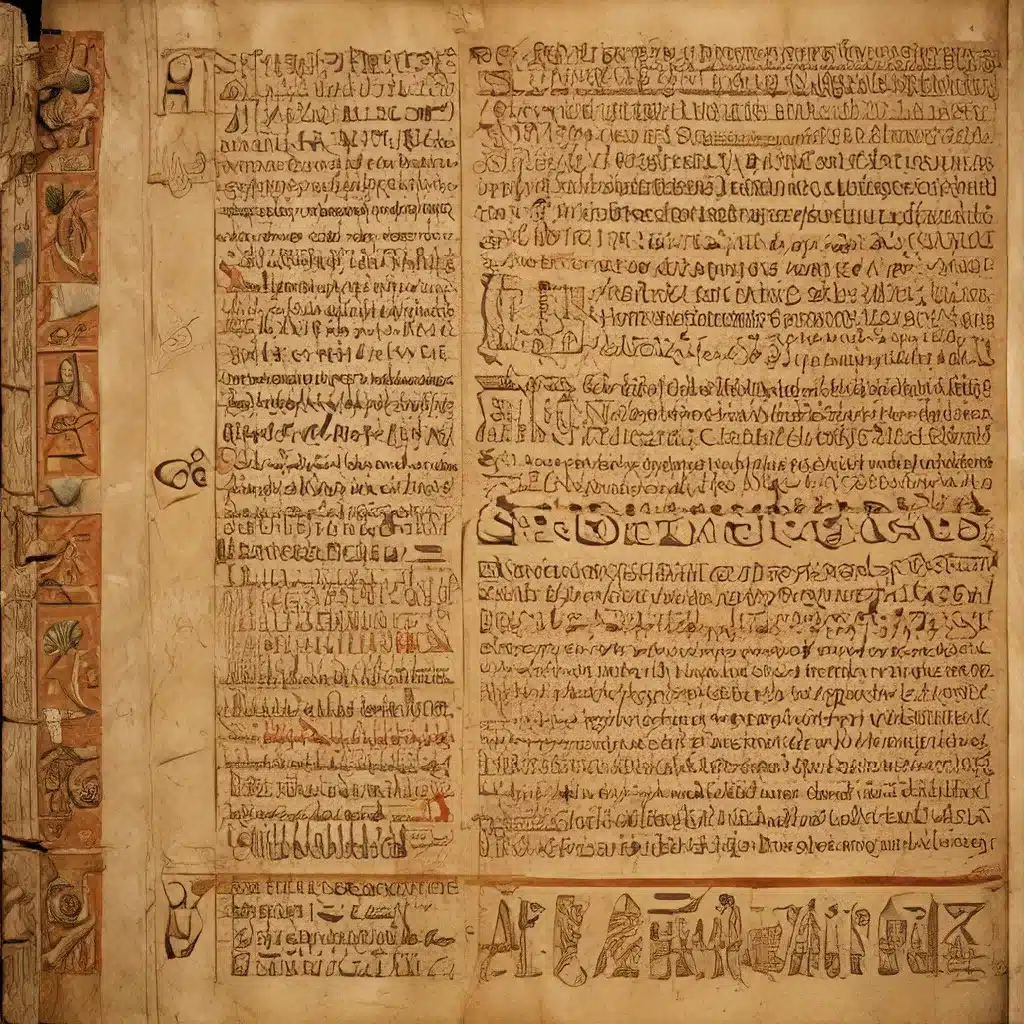
In the annals of ancient history, few discoveries have captivated the imagination of scholars and the public alike as the Rosetta Stone. This remarkable artifact, unearthed by French soldiers during Napoleon’s invasion of Egypt in 1799, holds the key to unlocking the secrets of Egyptian hieroglyphics, a writing system that had remained a mystery for over a millennium.
The Rosetta Stone: A Trilingual Treasure
The Rosetta Stone is a dark-colored granodiorite stela that bears the same text inscribed in three distinct scripts: Demotic, Hieroglyphic, and Greek. This remarkable trilingual inscription proved to be the crucial link that allowed linguists and archaeologists to decipher the long-lost language of ancient Egypt.
The discovery of the Rosetta Stone was a serendipitous event, as it was uncovered by French officer Pierre François Xavier Bouchard while the French army was constructing fortifications in the city of Rosetta, located near the Mediterranean coast. Bouchard recognized the significance of the juxtaposed scripts, rightly predicting that each script represented a translation of the same text.
The Greek text on the Rosetta Stone revealed that the inscription was a decree issued in 196 BCE by a synod of Egyptian priests, celebrating the coronation of Ptolemy V Epiphanes, a young king who had inherited the throne at the age of 13 after a period of political turmoil and revolt throughout Egypt.
Deciphering the Hieroglyphics
The Rosetta Stone’s trilingual nature set off a decipherment frenzy in Europe, as scholars embarked on a quest to unlock the mysteries of the ancient Egyptian scripts. While the first significant steps focused on the Demotic script, it was Jean-François Champollion, a French Egyptologist, who ultimately cracked the code of the hieroglyphic writing system.
Champollion’s breakthrough came when he recognized that the hieroglyphic script used a combination of phonetic and ideographic signs, a discovery that allowed him to correctly deduce the reading of the hieroglyphic writing of the word “to give birth” based on his knowledge of the Coptic language. This exceptional feat earned Champollion the title of the “father of Egyptology” and forever cemented the Rosetta Stone’s place in history.
The Memphis Decree and the Ptolemaic Sacerdotal Decrees
The text on the Rosetta Stone, known as the Memphis Decree, is a complex document that attests to the negotiation of authority between the Ptolemaic dynasty and the Egyptian priesthood. The decree celebrates Ptolemy V’s quelling of a rebellion in the Nile Delta and his efforts to renew financial support for the temples, increase priestly stipends, and sponsor prominent animal cults.
In return, the royal cult was to be reaffirmed through the erection of statues called “Ptolemy, protector of Egypt” in temples throughout the land. The priests were also required to tend to these statues three times daily and celebrate the king’s birth, thirtieth day, and day of accession.
The Memphis Decree on the Rosetta Stone is part of a broader context of Ptolemaic sacerdotal decrees, which include other famous examples such as the Mendes stela, the Alexandrian decree, the Canopus decree, and the Nobaireh decree. These imperial pronouncements, discovered through archaeological excavations, shed light on the complex relationship between the ruling Ptolemaic dynasty and the Egyptian religious administration.
The Legacy of the Rosetta Stone
The Rosetta Stone’s impact on the field of Egyptology cannot be overstated. Its critical role in deciphering the ancient Egyptian scripts has led to the proliferation of the term “Rosetta Stone” as a generic reference to anything that decodes ciphers or reveals hidden mysteries.
Beyond its academic significance, the Rosetta Stone has also become an international icon, whose “kaleidoscopic symbolism” has been appropriated by diverse groups over the past two centuries. For some, it represents political hegemony and scientific discovery, while for others, it is an emblem of shared cultural and national heritage, leading to calls for its repatriation to modern-day Egypt.
The Rosetta Stone’s journey has been marked by the imperial ambitions of France and England, as it was initially discovered by French soldiers and later confiscated by the British after their defeat of Napoleon’s forces. Today, the stone resides in the British Museum, serving as a testament to the enduring legacy of this remarkable artifact.
Unlocking the Secrets of Ancient Civilizations
The story of the Rosetta Stone is not merely a tale of historical significance; it is a testament to the power of human ingenuity and the relentless pursuit of knowledge. The decipherment of Egyptian hieroglyphics opened the door to a deeper understanding of ancient Egyptian culture, society, and history, paving the way for further discoveries and advancements in the field of archaeology.
Beyond the Rosetta Stone, there are countless other examples of archaeological discoveries that have transformed our understanding of the past. From the unearthing of the Terracotta Army in China to the exploration of the lost city of Machu Picchu in Peru, each new find offers a tantalizing glimpse into the extraordinary civilizations that have shaped the course of human history.
As we continue to uncover the secrets of antiquity, the lessons of the Rosetta Stone serve as a powerful reminder of the transformative power of knowledge. By deciphering the lost scripts and decoding the mysteries of the past, we not only expand our understanding of history but also gain invaluable insights into the human experience, the evolution of cultures, and the resilience of the human spirit.
Conclusion: Unlocking the Codex of Antiquity
The story of the Rosetta Stone is a testament to the enduring fascination with the ancient world. Through the tireless efforts of scholars, linguists, and archaeologists, the veil of mystery surrounding the lost scripts of antiquity has been lifted, revealing a rich tapestry of human civilization and cultural achievement.
As we continue to explore the remnants of these remarkable civilizations, the Rosetta Stone stands as a symbol of the power of human curiosity and the transformative potential of knowledge. By unlocking the codex of antiquity, we not only uncover the secrets of the past but also gain a deeper appreciation for the resilience and ingenuity of the human spirit.


